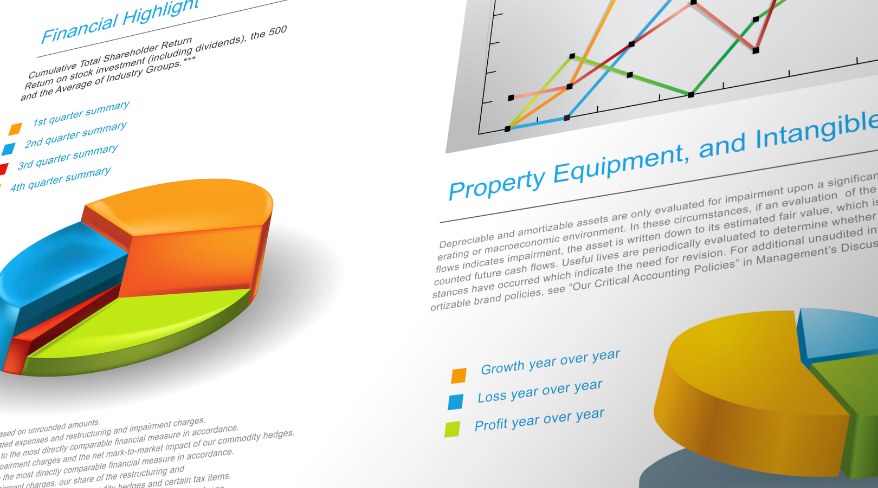We all should know the typical fundraising cycle. You first need to cultivate your donors. Then share the mission to get people excited and motivated. Next, you ask your prospective donors to get involved by contributing, and then (hopefully) you send them a thank-you letter within 48 hours. But when it comes to maximizing donor engagement, what happens next? This is where your nonprofit annual report becomes a powerful tool. Rather than simply moving on to find new donors, it’s much more effective to build on the relationship with those who have already contributed. Reporting back to your donors who have recently contributed is so much more than just sending a thank-you letter as a response to a transaction.
Stewardship and getting donors to renew is about building a relationship between a donor and the organization. This process of stewardship is essential for the long-term health of nonprofit fundraising. It focuses on renewing donors rather than finding new ones, which can be significantly more costly. By leveraging your nonprofit annual report, you can ensure that your donors feel valued and informed, ultimately leading to stronger, more lasting relationships.
Understanding the Importance of Donor Stewardship
Stewarding donors is vital to the long-term health of nonprofit fundraising. Stewardship at its core is the process of renewing donors. Current donor retention rates hover just over 40% and have been declining in recent years. The motivating reason for focusing on renewing donors over finding new ones is the cost. It can cost 50% – 100% more than the donor dollars collected to secure brand-new donors. In addition, the value of stewardship cannot be understated when considering the lifetime value of donor contributions. One important way to share information with your current and lapsed donors is to take full advantage of the annual report.
Ready to turn your nonprofit’s annual report into a powerful fundraising tool? Let’s connect and discuss how we can craft your annual report and unlock your nonprofit’s full fundraising potential. Contact us and let’s get started.
What is a Nonprofit Annual Report and Why It Matters for Fundraising?
One of the most valuable stewardship and communication tools that a nonprofit has is the annual report. The annual report is more than a glossy annual magazine. It is an expression from the organization that they are doing right by the donor’s investment. It is an opportunity to showcase the impact of those donor dollars. The annual report is a chance for the donor to get greater context on their contribution and the collective impact of the donor community on these efforts.
Typically, they include a long letter from leadership, lots of beautiful photos, charts, and fancy-looking Excel spreadsheets that showcase the bottom line of an organization along with a giant list of those who recently donated.
It takes time to get letters written, pay a photographer to take beautiful photos, and work with finance to get accurate numbers to report. However, an annual report can be a lot shorter than the typical 20-page expensive, coil-bound list of donors and something that is a quick reminder of the impact of your organization on the community.
A lot of folks in the nonprofit space believe that annual reports are outdated, and cost too much money. What’s more valuable to consider though is the replacement for the annual report. I suggest we think about annual reports in a more modern way. Think about it as a tool (or tools) to keep your donors informed, engaged, and ready to renew their contributions. As you build your nonprofit’s annual report, here are some things to consider.
How to Create an Annual Report that Resonates with Your Audience
It’s important to think about who is going to receive the annual report and how you will use it as a tool to fundraise. The first audience to consider is ensuring all current donors receive it. Depending on the size of your donor base, you may want to segment it to your larger donors. Regardless, make sure that folks who have recently contributed to your mission receive communication about what has taken place over the past year.
The annual report is also a great tool to share with recently lapsed and prospective donors. It can be a “leave-behind” after you’ve met with someone so that they have a chance to read up on your nonprofit and what has been accomplished over the past year.
Effective Donor Recognition Strategies
Most donors don’t contribute anticipating that their name will be in or on a special program. However, if you acknowledge your donors in any materials, you want to make sure that you have names spelled correctly, and the appropriate recognition formats for those donor names. You can guarantee that once your donors receive the annual report in the mail, they will look for their names and make sure they are listed under the right category. Be sure to make the donor list as accurate and up-to-date as possible, sharing and recognizing your donors’ contributions.
The Power of Storytelling in Your Annual Report
Everyone is motivated by passionate stories that tug at their heartstrings. An annual report is a perfect opportunity to take the time and effort to share the impact of donors in the community. Fundraising leaders need to understand where donor dollars go and how those contributions directly impact the lives of the beneficiaries and the stakeholders of your nonprofit. By sharing these stories, you inspire your donors to continue to give.
Timing and Frequency: When to Share Your Annual Report
An annual report is, by definition, something that happens once a year. It’s important to consider when this annual report is shared with your donor base and ensure you can share as much recent information as possible. Another thing to consider is thinking beyond just a one-time annual report and providing opportunities throughout the year to create content that can be shared, and then ultimately rolled into this effective broad-reaching stewardship document.
Using Your Report to Strengthen Donor Relationships
Annual reports are more than just a yearly obligation; they are a critical tool for communication and stewardship with your donor base. This is your opportunity to thank donors again, share impactful stories, and engage your audiences in a meaningful way. However, don’t wait until the end of the fiscal or calendar year to start gathering information. Instead, make the annual report a living document—continuously capturing stories, outcomes, and donor acknowledgments throughout the year. This proactive approach ensures that your annual report is not only a reflection of your past successes but also a powerful tool to inspire ongoing and future support. By leveraging your annual report strategically, you can deepen donor relationships, increase donor retention, and ultimately maximize the impact of your fundraising efforts.






